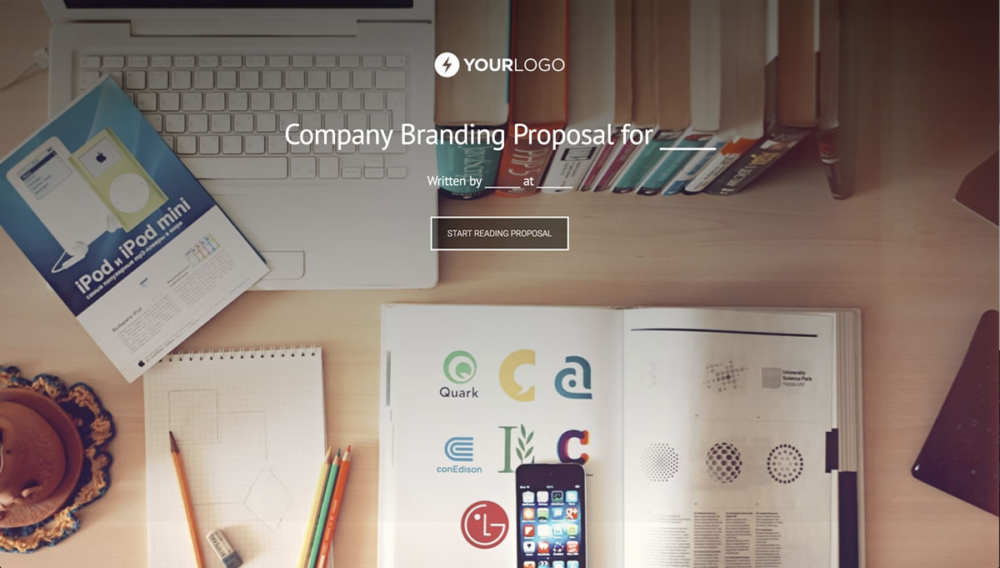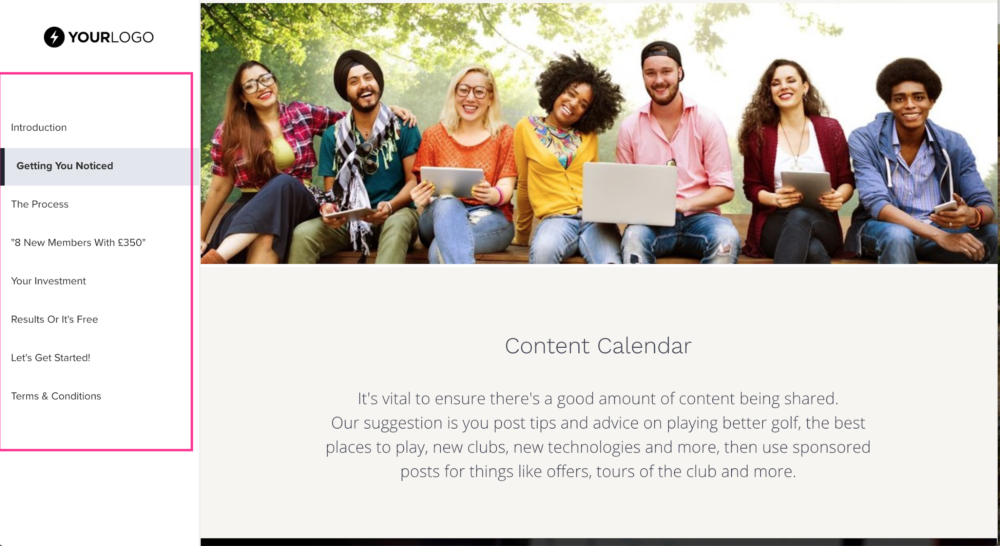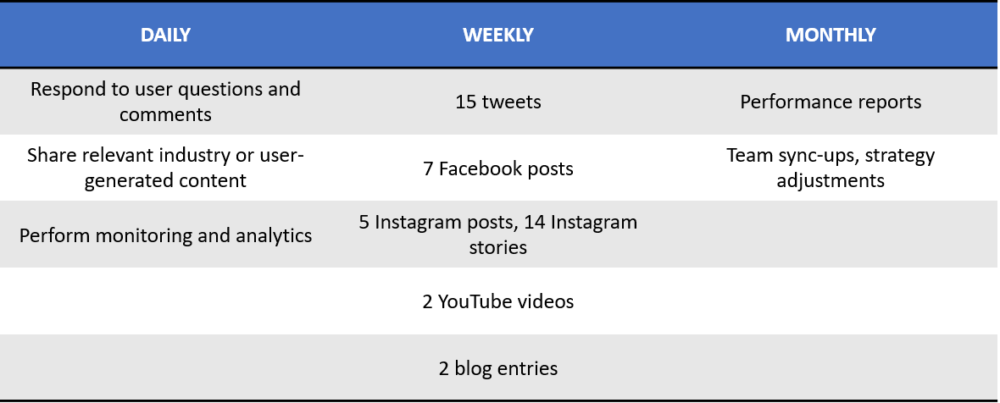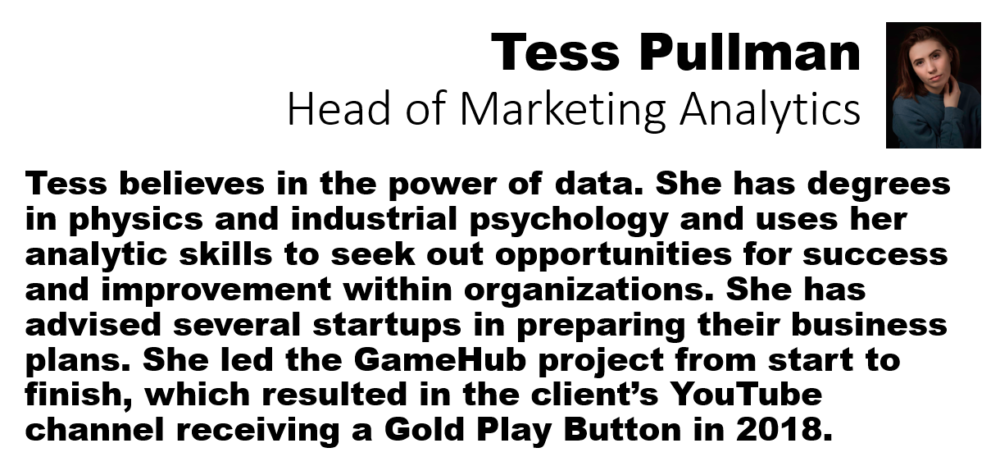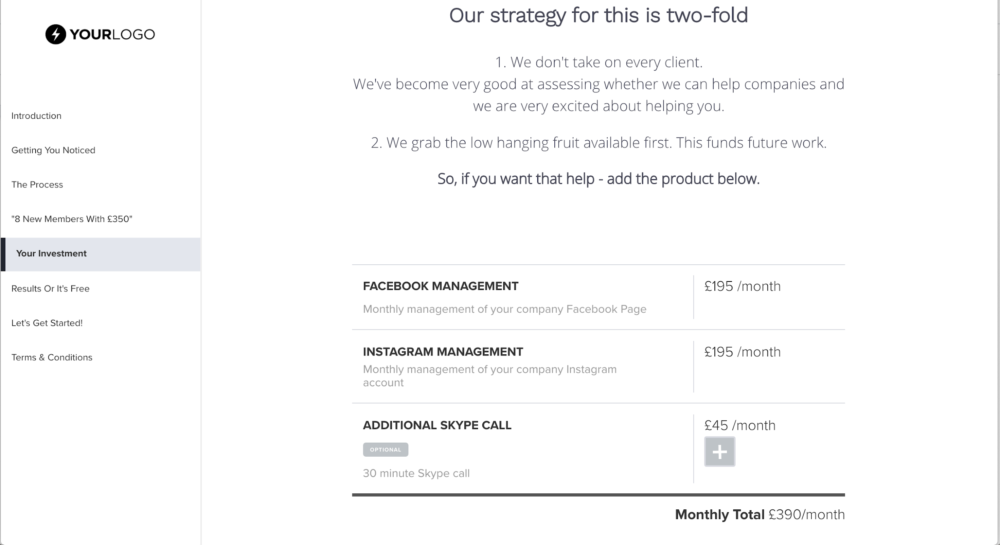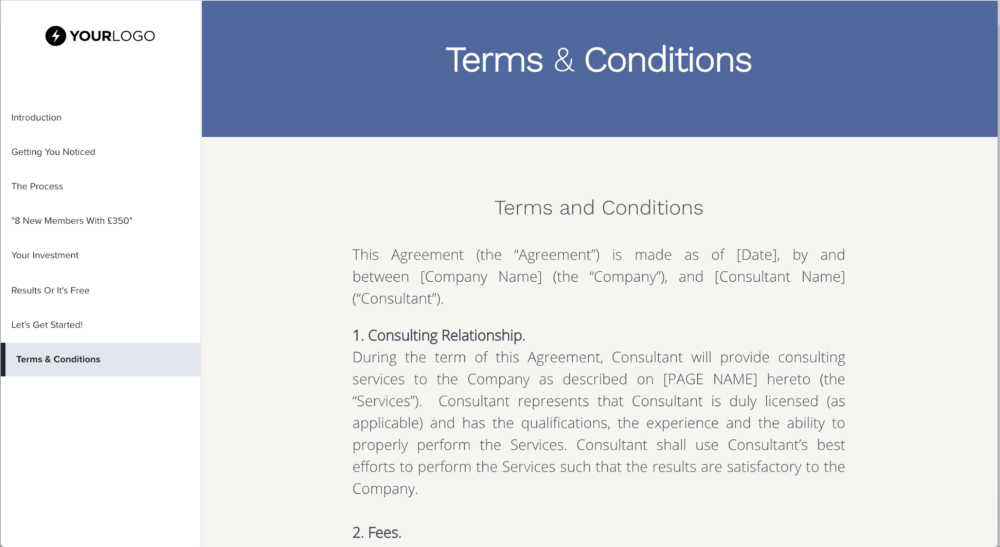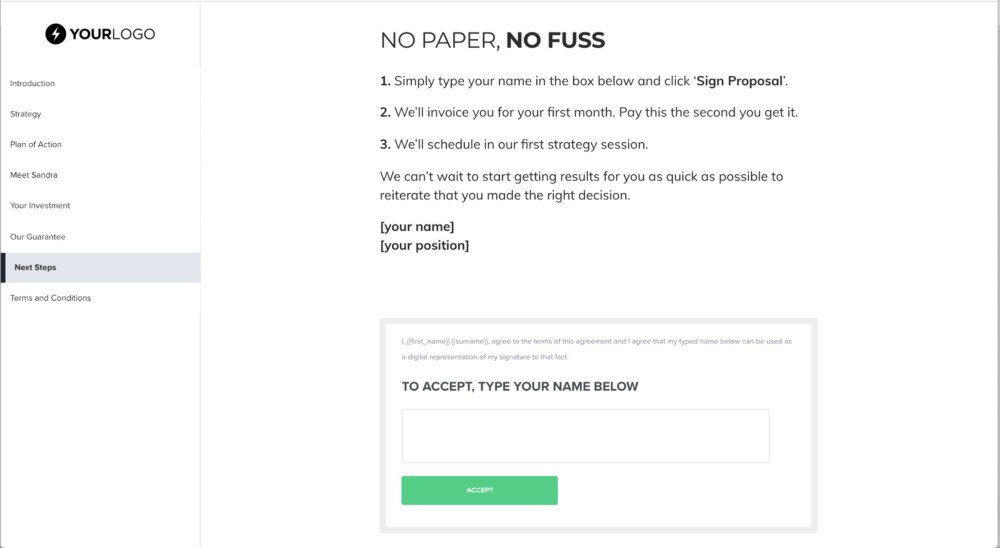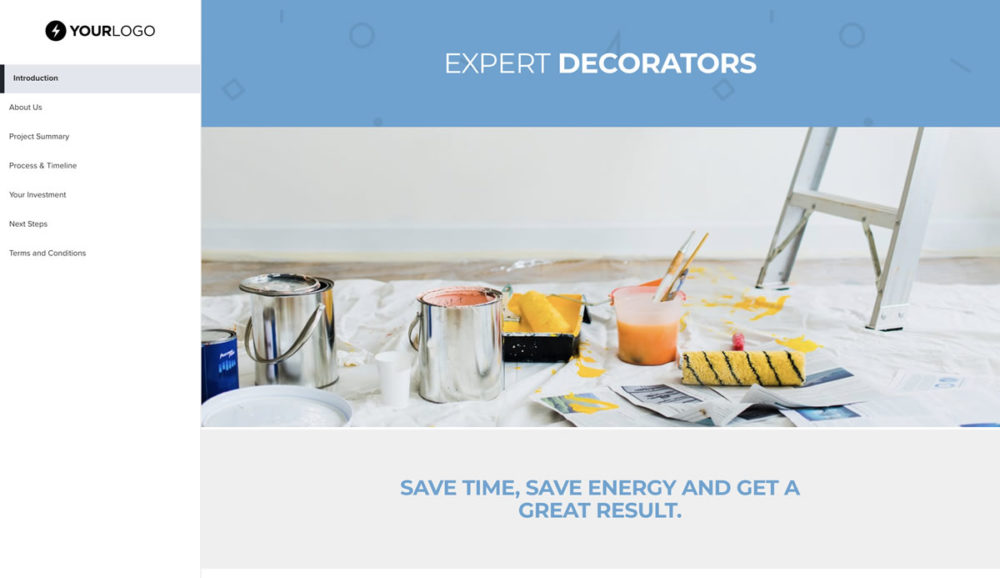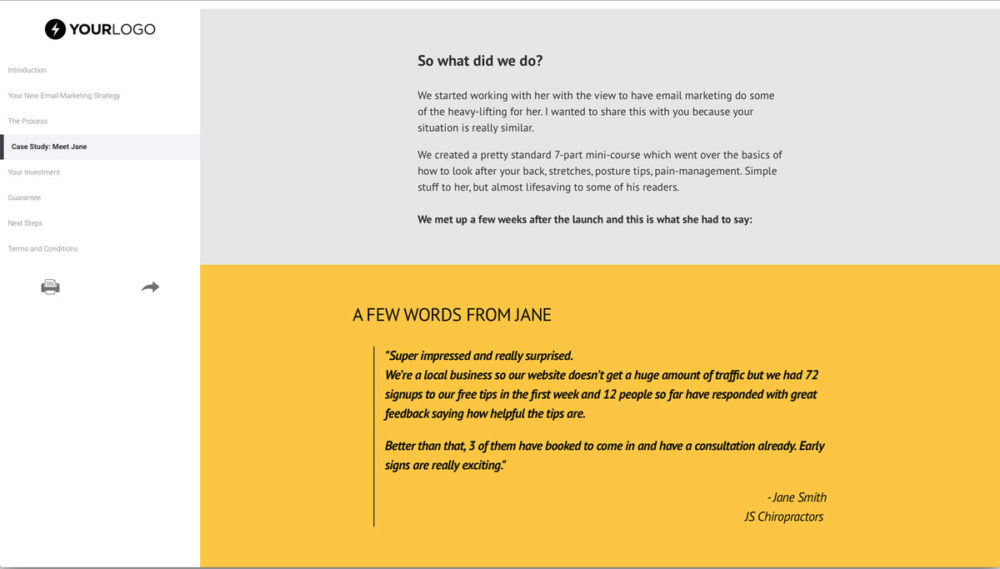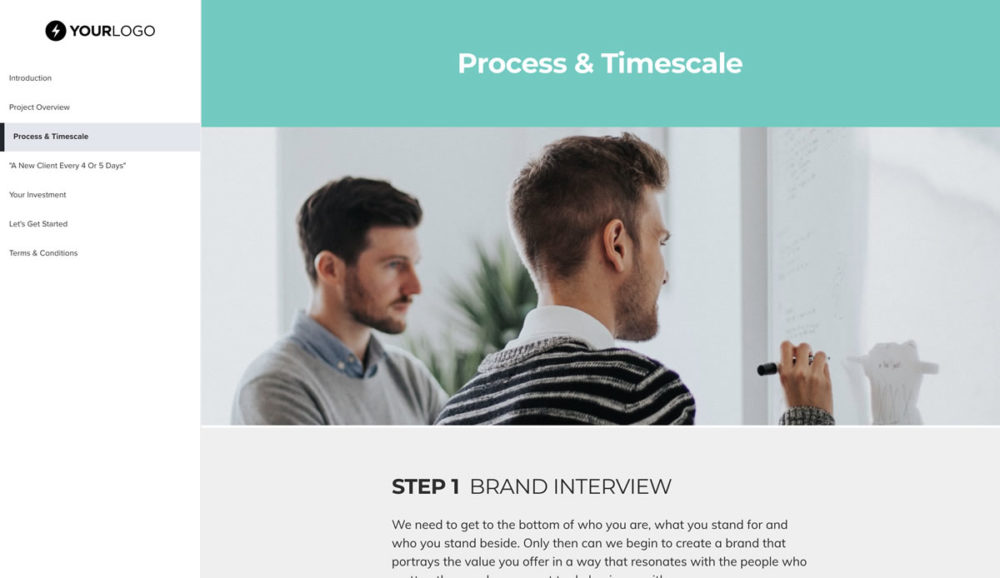Knowing how to write a proposal may seem intimidating. You’re asking someone who doesn’t know you personally to choose you or your business.
By definition, submitting a proposal can feel like a gamble. All businesses experience rejection from time to time, often for reasons utterly unrelated to the quality of the product or service.
But if you want to have the best shot at winning the contract, you need to know how to write a proposal that is compelling. Read on to learn how to do that.
How to write a proposal
Before you begin writing, start by gathering all the information you can get about the potential client and their needs. Your product or service might be the best thing ever, but if it doesn’t meet that customer’s needs, you will never make a sale.
This is why you must do your research. There is no room for cookie-cutter solutions – each proposal you write must be customized.
The specifics of the proposal you write will vary according to the client and industry. But there are certain elements that you need to cover:
- Your business information: Who are you? What is your product or service? What credentials do you have? Why should they pick you over the competition?
- Knowledge of the problem: Proof that you’ve done your research and really understand the client and their needs.
- Methods and pricing: How is your solution going to fix their problem, and how much will it cost?
These three points form the core of your offer to your potential client. Using the ten steps below, you will turn those points into an actual proposal.
1. Title page
The title page contains basic information about your business, including the name, logo, and contact information. It’s good practice to include the client’s name and contact information and the title of your proposal.
Your title page should be distinctive enough to be memorable, but also clean and simple. This is one great example:
When you file away your proposals in a proposal management software, the title page is often the first thing you’ll see. Make sure the title page is descriptive, good looking and easily identifiable.
2. Cover letter
You’re probably familiar with the concept of an elevator pitch. It’s a short speech where you introduce yourself to a potential client and give a brief summary of your product or service and why they should care.
A cover letter works similarly. Its purpose is to give the potential client a brief overview of who you are, what you do, and how you can help them. A proposal cover letter should be short and concise.
Here’s what most clients expect to find in a cover letter:
- A concise introduction to your company.
- Some brief background information about your company’s story (you can leave this out if you are extremely established and well known in your niche.)
- Why your company stands out from the competition.
Keep the tone friendly and encourage the reader to feel free to reach out to you. Don’t forget to thank the reader for their time.
Here’s an example of a typical business proposal cover letter:
The exact information you include will depend on the specifics of the prospective client and your offer. For example, if you’re writing a business proposal for an event-based service, you may need to mention an upfront non-refundable deposit to reserve the client’s chosen date.

One more quick tip: always learn the name of the specific person you’re writing to and use it. “Dear Sir or Madam” makes your proposal seem generic instead of personalized.
If you’d like to step away from the classic approach, you can make your introduction section look a bit different. Here’s how Adam Hempenstall, CEO and founder at Better Proposals approaches proposal cover letters: “I personally prefer to hit them round the head with a sledgehammer and get right to the point. Shock them into reading on and learning more.” Here’s how it can look like:
3. Table of contents
Unless the proposal is just a page or two long, you should include a table of contents. This shows the reader at a glance what is included and where they can find it.
Here’s an example:
Global customers rely on Bloomberg Sources to deliver accurate, real-time business and market-moving information that helps them make critical financial decisions. Please contact: michael@
If your proposal is on paper, include page numbers. If you’re sending the proposal in a digital format, you can create a clickable table of contents to make it even easier to navigate. You wouldn’t have to worry about a table of content when using proposal software as you’d have it by default:
4. Executive Summary
The executive summary is where you establish the context for the proposal — why are you pitching it, and why should the client consider it? Think of this as setting the scene. This is where you can link your product or service to the specifics of your prospective client’s needs.
Here’s a sample executive summary:
This proposal contains a comprehensive plan designed to enhance and grow JackSpot Gaming’s existing social media presence, including Facebook, Twitter, LinkedIn, YouTube, and Instagram.
Through the social media channels above, our team will engage JackSpot’s audience to generate awareness of the company, increase the company’s reach to 200,000 Facebook fans, 100,000 YouTube subscribers, and 150,000 Instagram followers. This will contribute to more downloads of new and existing titles, resulting in accelerated growth for the company.
Our clients are primarily tech companies, most of them working on mobile apps and games. We help these clients to identify and engage with their audiences by doing the following:

- Creating social media content.
- Posting company related updates.
- Integrating social media into overall marketing strategy.
- Developing promotions and campaigns.
- Monitoring analytics and key metrics.
We specialize in helping startups. Our founder, Brad Schmitt, has a background in tech startups. This makes him uniquely positioned to understand how companies like JackSpot Gaming operate and what you need to win at the social media game.
Depending on the type of client you’re sending a proposal to, your tone might be formal or casual, and may or may not use industry jargon. To get a sense of the company’s communication style, check out their About Us page. You can get useful clues there.
5. Proposal
This section will describe the solution you are suggesting to the client. Here, you give an overview of exactly what you are offering and what you will do for them. Focus on desired outcomes and the general timeframe for achieving those results.
The following section will tell them more about how you intend to achieve these promised results.
Remember to directly address your client’s needs and tell them why you’re the right person (or company) for the job.
The more clear and specific you can be here, the better.
6. Methodology
While the proposal section provides a general overview of what you will achieve for your prospective client, the methodology offers a more detailed view of how you will achieve it. Your methodology outlines the processes, deliverables, and timelines.
The process I follow is to create a timetable that matches deliverables with their expected delivery date. This makes the information easy to understand at a glance, as well as to compare against any competing offers.
Here’s a possible timetable, with deliverables and delivery frequencies, for a proposal to run social media campaigns for a games company:
Then I go into the details for each of the bullet points laid out in the timeline. For example:
- Creating Social Media Content: Using our analysis of your social media channels, the team will plan a running content calendar to grow your audience. We will run hashtag campaigns, use keywords, engage with influencers through likes and comments, share relevant industry news, and post unique content on your social media channels and through blogger outreach.
- Posting Company Related Updates: We plan to deepen engagement with your social media audience by sharing company news, including new product or update announcements and industry events.
- Integrate Social Media into Overall Marketing Strategy: In cooperation with your digital marketing team, we will run social media campaigns that support existing online and offline marketing efforts. Our support will include developing and sharing promotions and giveaways, but will also keep demand for JackSpot’s products high even without promotional activities.
- Promotions and Campaigns: The team will connect with existing followers, create new connections, and then engage them through promotions to build interest in your products. We will constantly monitor and analyze the results for each campaign and replicate the most successful ones.
- Monitoring and Analytics: We will monitor the results of these social media activities, focusing on key metrics such as the number of followers, reach, comments, reactions, and shares. We will also use social media analytics tools to determine audience sentiment towards specific content, then adjust our approach as needed.
The methodology above may have been created for a gaming company, but it’s a useful starting point for any business. Exactly how your methodology looks will depend on the client’s wants, needs, and industry outlook.
Remember the key rules: be clear, be specific, focus on outcomes, and keep the customer problem you’re trying to solve at the forefront of your mind.
7. About Us
You have already briefly introduced your company in the cover letter, but your proposal’s About Us section is where you tell the client that your company is the best one around – and why. This is where your prospective client can get to know you.
So what should you include in an About Us section? Aim for some or all of the following, in whatever split and order makes the most sense for you:
- Your history
- Your ethos, mission or company values
- Brief bios of the people who will be on the project team
- Any awards or accolades the company has received
- Any flagship projects you’ve been involved with or key clients you’ve worked for
- Social proof, such as client testimonials
Here’s an example of how your About Us page might look:
UpRise might be a young organization, but we’re one of the rising stars of the digital marketing industry. Since our launch in 2016, we’ve used our expertise in data and our experience in digital marketing to raise the social media profiles of our clients. We’ve won the DigitalMedia Times Social Media Agency Award two years in a row, and have been named Startup of the Year by the Santa Clara Small Business Association.
Our core values are integrity and honesty. This means we don’t buy followers or spam comment sections with good reviews. We believe that any organization can improve its online profile through listening to its customers, and we hold ourselves to the same high standards.
Real recognizes real, and UpRise Digital Marketing intends to keep it that way. We work with clients who are passionate about what they do, and we match their passion with our own. So here are some of the people you’ll be working with on this project:
The About Us section is where you can add some personality to your business proposal. In this section, you can show what your company does but share your values and tell stories about your people and the things they’ve done.
Your tone, language, and focus should match what the client uses. For example, a Fortune 500 company that does medical research would likely want to see evidence of experience working on scientific projects and expect a more formal proposal. For a young tech startup, on the other hand, a more playful and irreverent tone might be appropriate while conveying all the important information.
8. Pricing
Now that you’ve almost convinced your prospective client that your team is right for the job, you need to show them that you’re also offering value for money.
Setting your prices is notoriously difficult. Charge too much, and you’ll scare off prospective clients, but pricing yourself too low drives down the perceived value of your services.
The sweet spot, then, is somewhere in the middle. Your prospective client needs to feel like they’re getting a great deal, but you should not be tempted to price your services below the market rates.
Clients can be wary about lump-sum estimates. Itemized pricing tables let your prospective clients choose the services they need and leave out the ones they don’t.
For example, here’s how your pricing structure might look (specific figures are, for example only):
UpRise Digital Marketing uses a monthly billing cycle. Please find below a monthly estimate based on the services we think will be most suitable for your needs:
Listing more than just one package option may seem like a good idea. However, as our analysis of 180K+ proposals shows, prescribing the exact solution of the client’s problem without offering upsells and package pricing results in increasing your initial fees by 20.6%.
9. Terms and Conditions
The Terms and Conditions are where you specify the terms of engagement for working together. It includes things like how long the agreement will last, your payment dates and accepted payment modes, and your cancellation and amendment policy. The Terms and Conditions clearly spell out what you and your client expect from one another.
You may already have a standard template for your Terms and Conditions. If so, drop that into your proposal at this stage. If you haven’t yet created one, make it now and store it in a shared folder to make it easier to integrate into future proposals.
A typical Terms and Conditions page might look something like this:
If you are using a proposal software, the text of your Terms and Conditions could be presented in a more appealing way:
If your business has an in-house legal team, ask them to check your Terms and Conditions before sending the proposal. Even better, involve your legal team in the creation of the standard Terms and Conditions document.
In many instances, using the same set of Terms and Conditions will be sufficient. However, if the scope or pricing of a project is substantially different than anything you’ve done before, you might wish to consult a lawyer before sending your final proposal.
10. Agreement and call-to-action
If your client has reached this section of your proposal, you’re almost there. This is where you ask them to commit to using your services and sign on the dotted line. The CTA should be clear and unambiguous.
It could go something like this:
Your signature below indicates acceptance of this social media marketing proposal and entrance into a contractual agreement with UpRise Digital Marketing beginning on the below date.
Add fields for dates and signatures for yourself and the client, and you’re all set. If you are sending the proposal online, include an e-signature field:
Why you need to use a proposal
The purpose of a business proposal is persuasion. You need to convince the client of one thing: that you are the right person or company to work with.
A well-written proposal is an opportunity to showcase your product or service at its absolute best. It is also an expression of confidence in your ability to do the job well. The ultimate job of a business proposal is to show that you understand your potential client’s problem and that you have the perfect solution.
Proposal examples for inspiration
Proposals don’t have to be dry and boring — in fact, they really shouldn’t be! A well-designed proposal will help to catch the client’s attention, particularly if you work in a creative field. Here are some sample proposals I particularly like to give you some inspiration:
This proposal makes use of relevant images on the opening page. This showcases the company’s capabilities while giving the client the information they need in an easy-to-digest format.
The example above uses a template that provides a clear synopsis of what the company does. The strategic use of a testimonial helps to underline the company’s expertise and their ability to deliver.
You can see how in each of the examples listed above, the proposal templates are designed to be easily digestible. You don’t have endless chunks of text. Rather, key information is provided in an eye-catching way. This is something that you should keep in mind as you write your proposal.
How to submit your proposal
A business proposal is either solicited or unsolicited. A solicited proposal is one that the client has asked for, either verbally or through a formal request for proposal (RFP). When a client puts out an RFP, they will usually specify how to submit proposals.
While some businesses still insist on receiving paper proposals, many are now going paperless and prefer to receive electronic proposals. However, even PDF, Word and PowerPoint proposals are quickly becoming a thing from the past.
More people rely on proposal software such as Freshbooks, Bonsai, or Better Proposals, to save time and give their proposals a fresh modern look.
Clients will often specify a designated person to send your proposal to. This will often be either a Project Manager or someone from the procurement team. Either way, the RFP will normally tell you who this person is.
The golden rule to remember is this: if your prospective client has laid out guidelines for submitting proposals, follow them to the letter. This is something your management team should be aware of. Failing to follow instructions at this stage will have the opposite of the effect you want.
If the client has time, schedule a web conference to walk them through the proposal and get feedback. This gives you a chance to explain further the benefits of partnering with you on the project, and to use your personality to help secure the sale.
Unsolicited proposals are treated a bit differently from solicited ones. Many organizations have standard templates and procedures for the submission of proposals, such as a central receiving office. Send an email to whoever is in charge of acquisition or procurement to clarify the process. This will ensure your proposal ends up in the right hands.
Now, go make a great proposal!
A business proposal is a complex and in-depth document, and a lot of skill goes into creating a good one. You need to put time and effort into preparing your proposal if you want to see results.
But as you gain more experience and really know how to write a proposal quickly, you’ll notice that each one will have a lot of things in common.
Some clients will require you to use a specific template, so you should always check and double-check their requirements. Keeping your previous proposals as templates, organized by client and industry, will help you to put together future proposals faster and more easily.
As you write your proposals, always remember to keep these two crucial things in mind:
- What your company stands for: Your proposals should reflect your company’s mission, core values and world-view.
- Your prospective client’s needs: You must show that you understand the client by identifying their issues, and offering feasible, affordable solutions.
Hopefully, the proposal-writing process I’ve just described will help you write winning proposals that will showcase your company, your people, and your experience at their absolute best.
Good luck!
Keep the conversation going...
Over 10,000 of us are having daily conversations over in our free Facebook group and we'd love to see you there. Join us!


